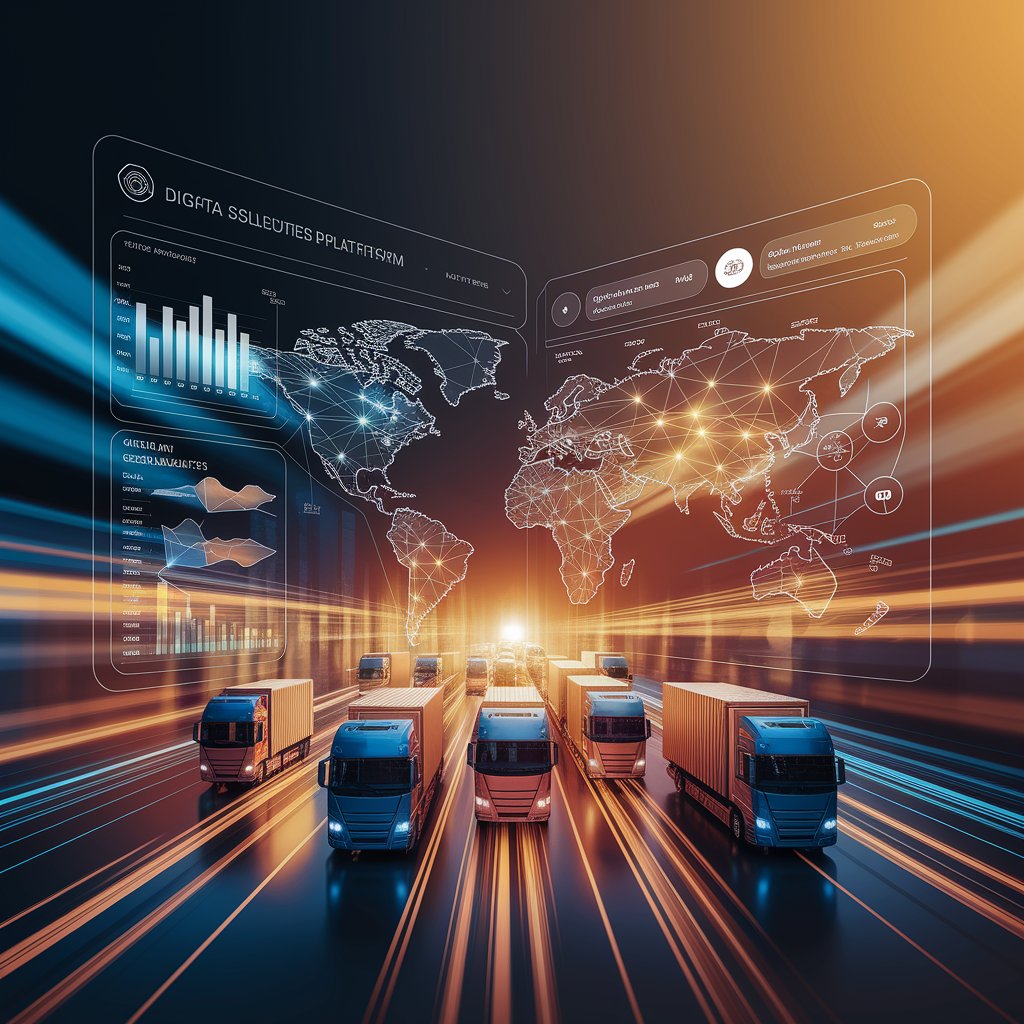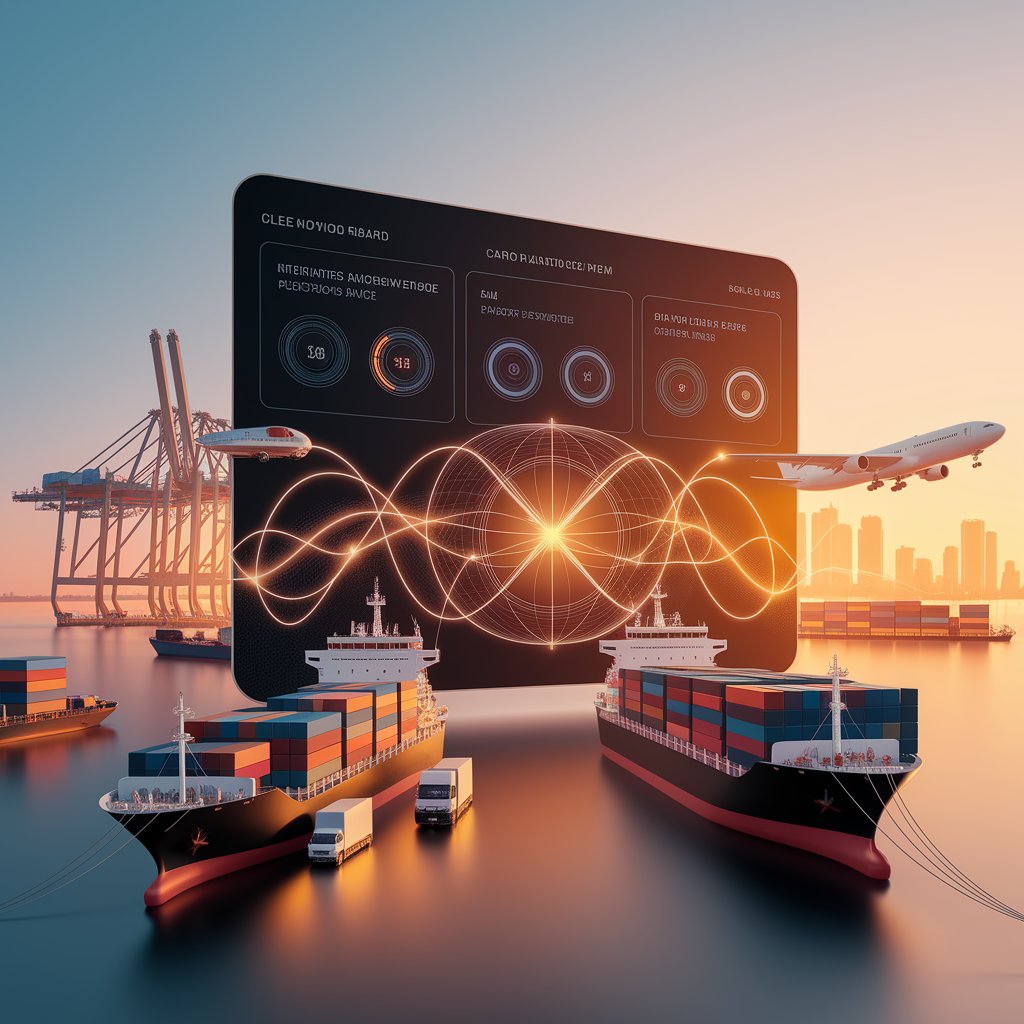Digital Freight Solutions: Transforming Global Logistics

Introduction
This is where digital freight solutions step in. By digitizing operations with platforms powered by AI, cloud computing, and automation, businesses gain real-time visibility, faster execution, and smarter decision-making.
What Are Digital Freight Solutions?
Digital freight solutions are technology-driven platforms that manage freight operations online. They connect shippers, carriers, and logistics providers through a unified ecosystem that replaces manual processes with automated workflows, digital communication, and predictive analytics.
Instead of relying on fragmented systems, digital freight platforms provide a single source of truth for bookings, documents, tracking, and performance metrics.

Key Features of Digital Freight Solutions
- Automated Booking Systems – Match shippers with carriers instantly, reducing negotiation time.
- Real-Time Tracking – GPS and IoT sensors deliver live shipment visibility.
- Digital Documentation – E-BL, e-invoicing, and automated customs forms reduce errors.
- Freight Rate Comparison – AI-driven tools suggest optimal carriers based on price, speed, and capacity.
- Predictive Analytics – Forecast demand, congestion, and capacity shortages before they occur.
- Collaboration Portals – Enable shippers, carriers, and forwarders to work seamlessly.
Benefits of Digital Freight Solutions 📈
- Efficiency Gains: Eliminate manual processes and speed up operations.
- Cost Reduction: Lower administrative expenses and optimize carrier selection.
- Transparency: Provide real-time shipment updates to stakeholders.
- Scalability: Handle higher volumes without increasing staff.
- Resilience: Adapt quickly to market changes and disruptions.
- Customer Satisfaction: Faster deliveries and improved service reliability.

Real-World Applications
- Shippers – Compare rates, book instantly, and track shipments on one platform.
- Freight Forwarders – Automate documentation and improve customer service with visibility tools.
- Carriers – Optimize fleet utilization and reduce empty miles.
- E-commerce Businesses – Use automated shipping solutions to manage spikes in demand.
- 3PLs – Offer digital-first services as a competitive differentiator.
Challenges in Digital Freight Adoption
- Integration Issues – Connecting digital platforms with legacy ERP and TMS systems.
- High Upfront Costs – Technology investments may challenge small businesses.
- Resistance to Change – Staff accustomed to manual workflows may hesitate.
- Data Security – Digital platforms must protect sensitive trade and customer data.

Best Practices for Implementing Digital Freight Solutions
- Start Small, Scale Fast – Begin with core processes (e.g., booking, tracking) before expanding.
- Prioritize Integration – Choose platforms compatible with ERP, WMS, and CRM systems.
- Focus on User Adoption – Train staff and incentivize digital-first workflows.
- Leverage AI and Automation – Use predictive insights to improve planning.
- Measure ROI – Track cost savings, faster lead times, and customer satisfaction.
Future of Digital Freight Solutions 🚀
- AI-Driven Decision Making – Smarter carrier selection, route optimization, and dynamic pricing.
- Blockchain Applications – Secure, transparent trade documentation.
- Digital Twins – Simulating freight networks to predict risks and improve planning.
- Green Logistics Integration – Tools to track and reduce carbon emissions.
- Global Digital Marketplaces – Platforms connecting shippers and carriers worldwide in real time.
Conclusion
Digital freight solutions are reshaping global logistics by eliminating inefficiencies, increasing visibility, and making supply chains more resilient. Companies that adopt these tools benefit from faster operations, reduced costs, and stronger customer relationships.
In the era of digital-first logistics, adopting digital freight solutions is no longer optional—it’s the foundation for competitiveness and long-term growth.
